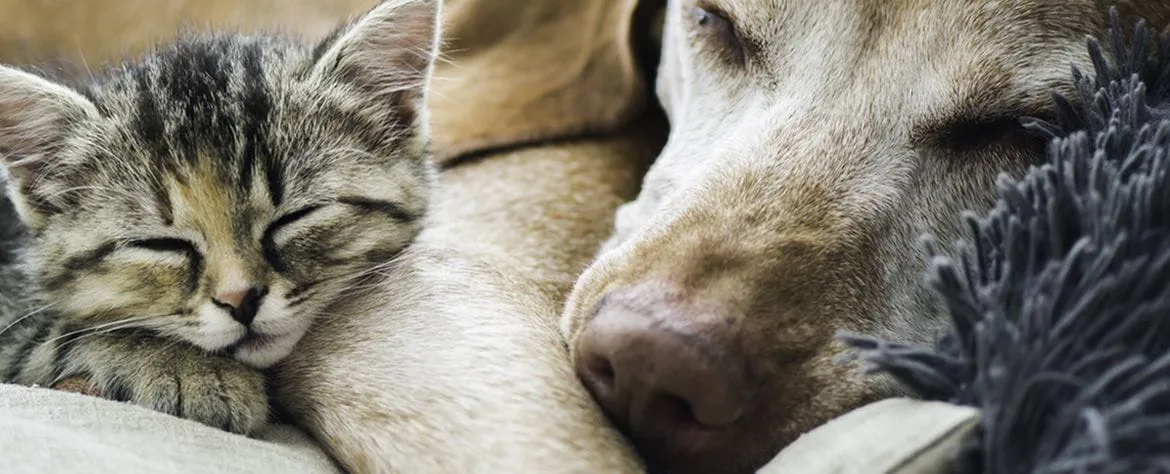September Case of the Month: Ali's Unusual Dental
How Preventative Dentistry May Have Saved This Young Dog's Life

Meet Ali, a 3 ½ year old female spayed Boxer, that loves coming to see her veterinarian for her annual check-ups! She is an exceptionally sweet girl that loves her Mom, Dad, and brother, Jake Boxer. Her pet parents are extremely prudent about giving her lots of love and special attention, as well as keeping her up to date on preventative care. All this diligence turned out to be a good thing when what was expected to be a routine dental, turned into a possible life saving procedure for Ali.
Comprehensive Preventative Oral Care for Pets
All Pets Animal Hospital recommends a Comprehensive Oral Health Assessment and Treatment (veterinary “dental”) for all dogs and cats ideally on a yearly basis. Just like biannual dental exams for humans, these regular treatments help prevent periodontal disease, the #1 most commonly diagnosed medical condition in our pets. Dental disease can be much more dangerous than just bad breath and dirty teeth – chronic periodontal disease can lead to tooth root abscesses and bone infections, as well as heart, liver and kidney disease. The dental procedures performed at All Pets Animal Hospital are completely comprehensive, and every procedure includes an oral exam, full-mouth dental x-rays, cleaning above and below the gumlines, polishing, and fluoride treatments. While anesthesia is considered absolutely necessary for the dental x-rays, oral exam, thorough cleaning and polishing, regular dental cleanings help keep anesthesia to a minimum. Dogs and cats who have regular dental care often have minimal dental disease, meaning our dental procedures take a lot less time than a very diseased mouth.
As little Ali’s owners were seeking a dental cleaning as preventative maintenance, we had every expectation that her procedure would be quick and relatively simple.
Ali's Dental Appointment
After a physical exam and some pre-anesthetic lab work, Ali was all set and ready to go for her dental procedure with us. Her pet parents had made sure to not give any food the morning of the procedure and left a good phone number with our staff so we could call with any updates during and after the procedure. Ali was given sedation both to help her feel sleepy, and to allow us to use less anesthesia during the procedure. Her monitoring equipment (ECG, blood pressure, heart rate, oxygen saturation, temperature, CO2 exchange) was hooked up so we could monitor Ali’s vital signs and detect any problems while she was under anesthesia, helping us provide the safest anesthesia possible during her procedure. A thorough oral exam was performed of her mouth and no abnormalities were noted – which was exactly what we expected. The oral exam involves evaluating the teeth, gums, and oral cavity for signs of infection or abnormalities. Special instruments were used to measure pockets below the gumline, look for signs of infection, or tooth decay. We then took x-rays of the mouth to help identify diseases or problems below the gumline which cannot be detected on gross appearance, or with an oral exam. Unexpectedly, these were highly abnormal.

Ali’s dental x-rays showed a large black space on her lower left jaw where bone should be – from her lower left canine tooth (the “fang” in the front) to her back pre-molar there was absolutely no jaw bone present and nothing to hold 4 lower teeth in place (her lower left canine tooth and three pre-molars). An unexpected finding on a 3 and ½ year old dog with no previous medical conditions, no health concerns, no dental disease, and no obvious missing teeth. The abnormality turned out to be what is known as an odontogenic cyst or dentigerous cyst. These cysts can be associated with many different causes - from impacted teeth that never erupted to something very concerning like cancer. These cysts routinely remain hidden until there is significant swelling of the jaw or the pet fractures their jaw bone, or… until dental x-rays are taken. Not only do we recommend yearly dental procedures for pets as preventative care, but also to detect missing teeth, cysts, or even cancer. In Ali’s case, without the dental x-rays, we would have missed this devastating disease process, possibly until it was too late. If left untreated, these cysts continue to grow and can lead to jaw fractures – when this occurs, extensive surgery is needed to save the broken jaw.

Luckily, we were able to catch this abnormality in Ali prior to any devastating and long-lasting effects and were able to repair the cyst that day. Ali was put on strict mouth rest after surgery for 8 weeks - soft food only, no toys, or rough playing. This allowed the jaw bone to regenerate and heal completely.
We are happy to report that Ali is doing great and recovered without any complications. If no swelling of the jaw is noted in the future, we will recheck Ali's dental x-rays in one year to be sure the cyst has completely resolved and healed well. We wish Ali a speedy recovery and a “Great Job!” to her pet parents for electing to perform a preventative dental – one that really became a life-saving procedure.



